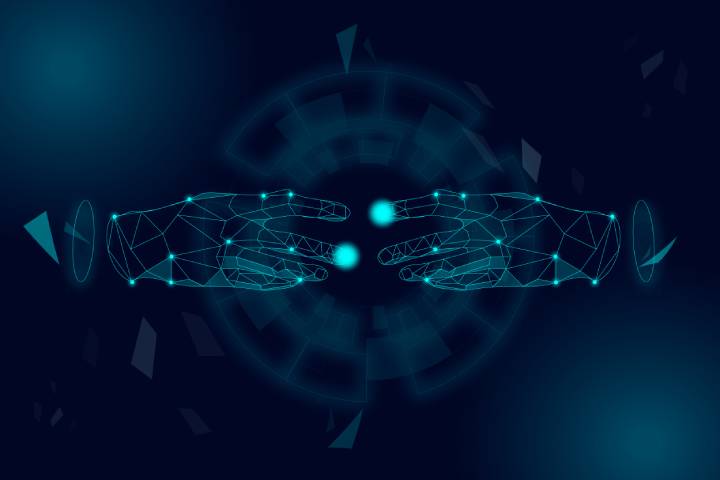Anyone who has had the pleasure of reading a science fiction novel, or seeing science fiction movies, has often heard of Artificial Intelligence. Films like 2001 – A Space Odyssey and similar have built the idea of superior intelligence in the collective imagination. In reality, as we will see, artificial intelligence, AI for short, is something more complex that can have a much more important impact on our lives. Today we will see why.
Artificial Intelligence: A Definition
When we talk about artificial intelligence, we are referring to a branch of computer science. According to the definition of the engineer Marco Somalvico, professor at the Politecnico di Milano:
“It studies the theoretical foundations, the methodologies and the techniques that allow the design of hardware systems and software program systems capable of providing the electronic computer with performances that, to a common observer, would seem to be of exclusive relevance to human intelligence”.
In the early days, Artificial Intelligence was almost exclusively the prerogative of sectors such as computer science, mathematics, and geometry. Nowadays, as we will see, this discipline has pervaded our lives offering us innovative approaches in many sectors, from automotive to medicine. Before we get to this, and the internet of things, let’s take a quick step into the history of Artificial Intelligence.
The Birth Of Artificial Intelligence
The concept of Artificial Intelligence is relatively modern. In 1956, a conference was held at Dartmouth College which was attended by several experts in intelligent systems, as they were then called, including the American computer scientist John McCarthy. The idea proposed by these, together with ten other researchers, was to create a machine capable of simulating the learning abilities of the human being.
In other words, a real Artificial Intelligence as McCarthy himself defined it for the first time in history. At the same conference, other computer scientists were also present, Allen Newell and Herbert Simon, who had already created a program, the Logic Theorist, capable of proving mathematical theorems. The attention, however, was focused on the expression used by McCarthy, who gave birth to the new discipline.
In the years to come, the IT giants threw themselves into the frenzied search for technologies capable of further improving the capabilities of Artificial Intelligence. It was the case of IBM, but not only that. In 1958, for example, McCarthy himself created the first programming language useful for creating Artificial Intelligence programs: Lisp, from List Processor.
The field of application, until the first half of the 1960s, was the mathematical one. In the second half of the decade, however, the need emerged – as well as the possibility – of creating Artificial Intelligence capable of facing and solving problems closer to those of man.
An example was that from the field of biology. In 1969, the students and researchers of the Carnegie Institute of Technology created the DENDRAL, a program capable of reconstructing simple molecules starting from the analysis with the mass spectrograph. This was a real breakthrough for Artificial Intelligence, which, for the first time, found practical application.
From this time until the 1980s, the development of AI was relentless in every area. A practical example? The so-called Deep Blue, a machine made by IBM to challenge the then chess champion, Garry Kasparov. Challenge ended, after the partial advantage of the chess master, with the victory of the machine.
Machine Learning: The ability To Learn Automatically
One of the main characteristics of Artificial Intelligence proper is that of being able to improve itself automatically, gradually acquiring information. This machine learning process is called Machine Learning. There are different forms of learning:
- supervised: in this case, the system is equipped with a series of starting models and experiences; when the algorithm is faced with a problem, it draws from these databases and automatically decides which is the best possible answer;
- unsupervised: in this case, the machine does not have a database from which to draw and, therefore, does not have an example of the expected results; to identify the best answer, the system automatically catalogs all the information available in the surrounding environment;
- for reinforcement: the last case is the most complex because the computer system is equipped with tools that allow you to improve your learning skills, such as sensors and cameras; it is the typical system of self-driving cars.
In everyday life, we see examples of Machine Learning. For example, this is what happens when we activate the voice recognition functions of a smartphone.
Artificial Intelligence Today
Examples of Artificial Intelligence, nowadays, are increasingly present in our lives. One of the most typical examples is what we can find in the automotive sector: self-driving vehicles, based precisely on Artificial Intelligence systems, are now a consolidated reality.
Further practical applications, then, are those carried out in the medical field: systems capable of analyzing the heartbeat, analyzing tumors and other pathologies are also increasingly widespread.
These applications, however, still appear distant from our days. On the contrary, there are forms of Artificial Intelligence that we already use today. This is the case, for example, of the advanced systems mounted “on board” of the most recent smartphones: thanks to implementations of this kind, in fact, these devices are able to improve image quality, recognizing the subjects portrayed within the scene. and optimizing the overall photographic yield.
Artificial Intelligence And The Internet Of Things
A particular application of Artificial Intelligence is that relating to the Internet of Things. An example of this application is already available to all of us, thanks to the smart devices that are on the market today.
Through the analysis of the user’s habits, algorithms based on Artificial Intelligence can evaluate the best time to start specific operations. In this context, therefore, the machine learning capabilities of the system are also very important.
Also Read: Cloud Server: What It Means And What Advantages It Can Give To Your Company








